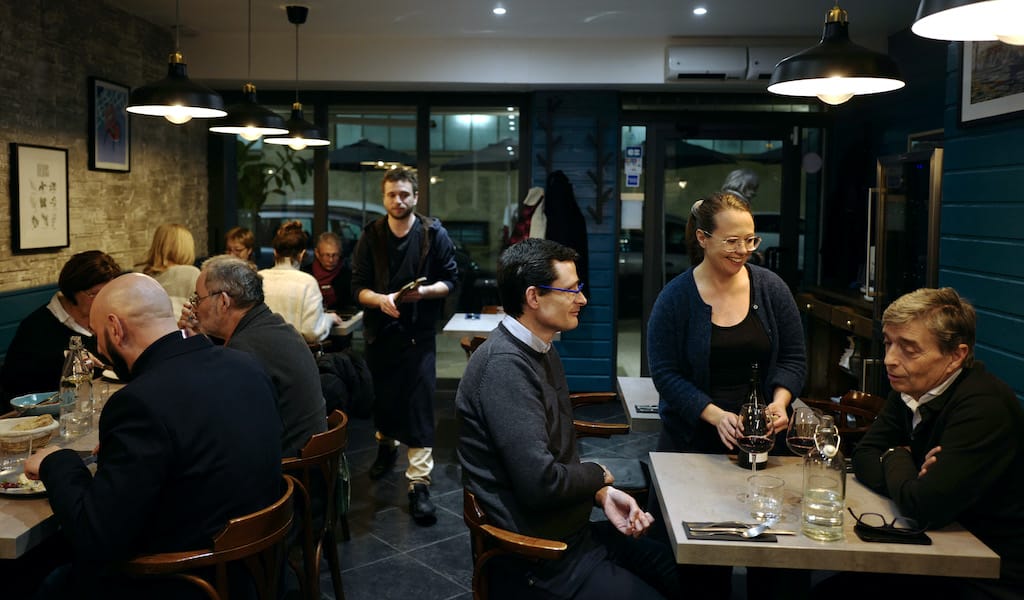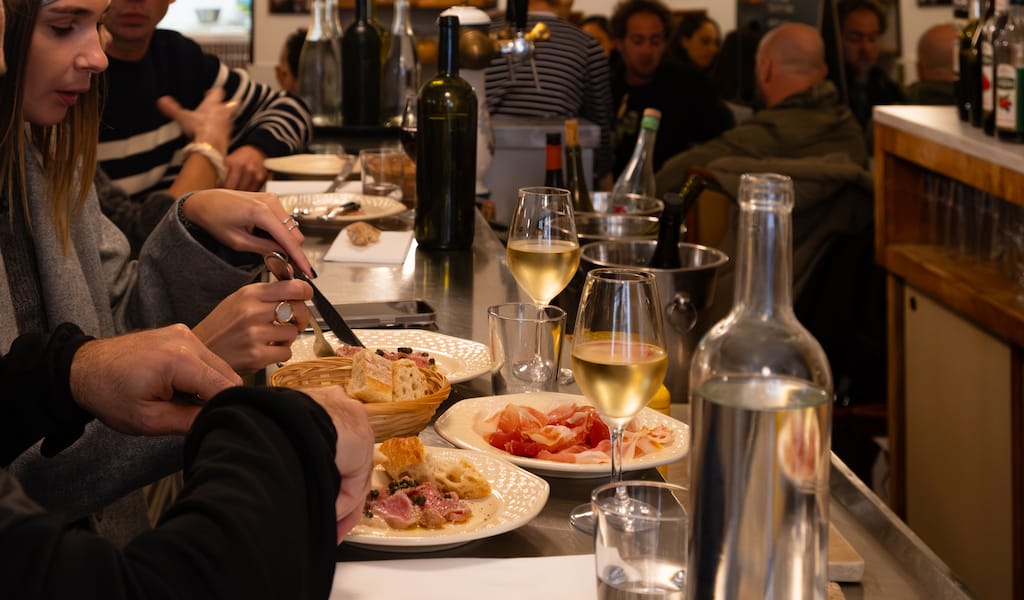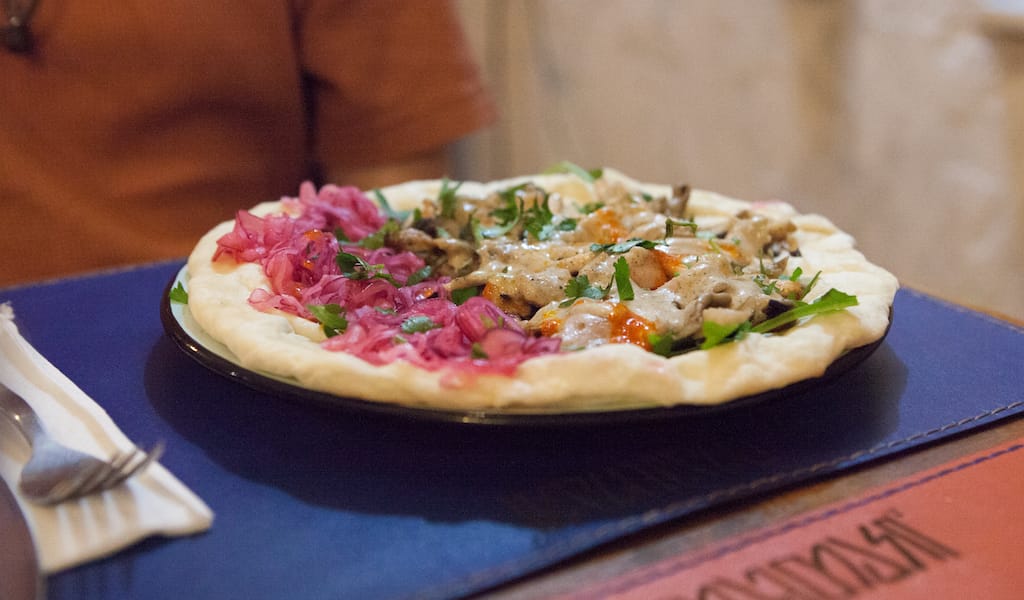Like other young French chefs who receive classical training in their home country, Jeanne and Jean-Phillip Garbin headed abroad to gain some practical experience. The couple, in fact, went all the way to Australia, only to find themselves working brutally long hours and longing for home.
The two eventually returned to France, landing in Marseille – Jeanne’s hometown – where for the last two years they have been running Nestou, a cozy spot in the Catalan neighborhood that allows them to cook a small selection of fine French-Mediterranean food and maintain a positive, comfortable atmosphere.
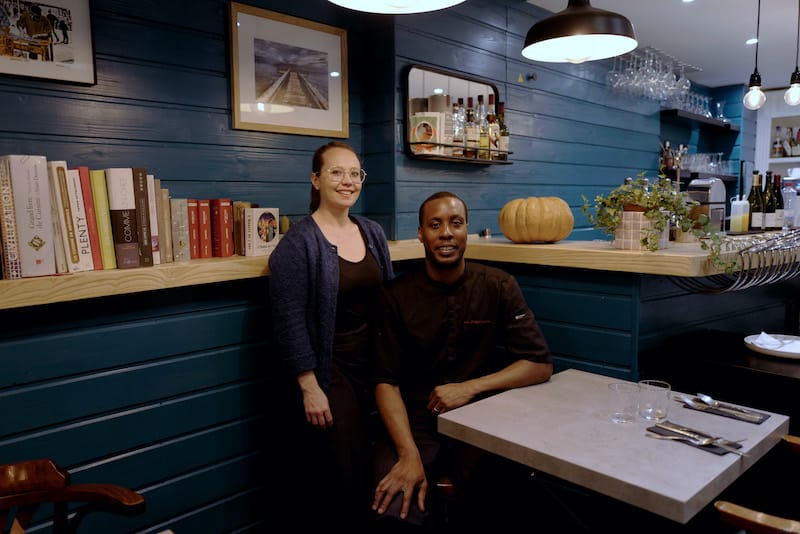
Jeanne and Jean-Philippe took over the space from an existing restaurant, enticed by its setup – a fully-equipped kitchen with a work station for Jeanne, who makes the entrées and desserts, and ample room left for Jean-Philippe to work on the main courses. The former restaurant was all wood like a chalet, and Jeanne’s aunt helped redesign it, painting the panels emerald green and adding a shelf for cookbooks on one wall, with a bookcase on another to hold Nestou’s wine collection.
We took a table next to the bar counter so we could see all the goings-on. Jeanne placed before us a few squares of Jean-Philippe’s focaccia, lightly topped with crunchy oregano, served with and small saucer of pungent Greek olive oil to soak up. This amuse-gueule married well with our spicy grenache wine (Est-Ouest, Côtes du Rhône, Domaine André Brunel) – just the thing to pique the appetite. The butternut squash and mushroom soup came next, uniquely layered so that we can taste each ingredient both separately and together.
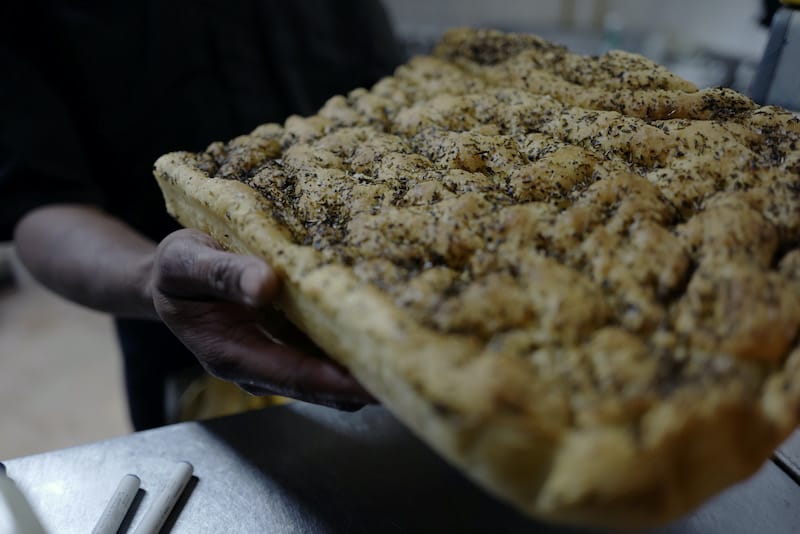
The plat was a flavorful, moist maigre in its crispy skin, accompanied by lightly grilled cèpe mushrooms. To complete our meal, we ate Jeanne’s squash tarte with slices of crunchy persimmon for an orange-on-orange desert. But there was no sameness in the experience of eating it. Like the soup, the flavors and textures of her pastry and pie filling are cooked to perfection, and each ingredient stands out. The slice was lightly drizzled with chestnut honey, and accompanied by a cloud of fromage blanc (a soft white cheese), which – whipped into a ball and dusted with crushed pumpkin and pistachio seeds – added interest and savor to the pie.

Freshness and seasonality are key for this cooking couple. Last summer, during a heatwave, their delivery from a small organic farm in Saint Marthe was late, so they paid them a visit. Jeanne recounts her fascination with the ecosystem they discovered, the special techniques of watering less but more frequently during hot periods, the use of herbs and plants to ward off parasites, the role of chickens that pluck up certain grains and vegetable debris. Nestou now creates its menus according to what the farm in Sainte Marthe and other local sources send them, to keep their offerings minimal, inventive and impeccably fresh.
Also important to Jeanne and Jean-Philippe are the people they work with: they must receive fair payment, and be bien dans leur peau, “good in their skin,” as the French say of well-adjusted, positive folk. A satisfied and self-possessed staff feels encouraged to do their best work, Jeanne explains, and guests notice a positive atmosphere and collaborative spirit in the restaurant. When questioned about her advanced social consciousness she quipped, looking toward her husband, whose family traces its roots to Guadeloupe: “He is Black, and I’m a woman, and we both have experienced discrimination and exploitation.”

Jeanne’s cousins sometimes join the Nestou team, especially in the busy summer months, and the family really enjoys working all together, creating an open, easy ambiance for diners. Jeanne wishes to maintain the restaurant’s family character (the place is actually named after her son Ernest, who’s nickname is Nestou), and Jean-Philippe dreams of one day opening a snazzy place with a sea view. In a sense, they already have both in the current Nestou: from the restaurant’s sidewalk tables which are set out in warm weather, it’s possible to see the sea across the street, and the restaurant offers artfully-presented, refined cuisine in a warm, comfortable space.
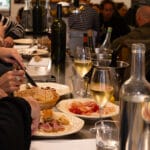 March 19, 2024 À Moro
March 19, 2024 À Moro
In a small dining room with Italian terrazzo floors, warm lighting, and earthy, […] Posted in Marseille March 15, 2024 Tamtaki
March 15, 2024 Tamtaki
The Vera district of Tbilisi is bursting with tempting food options, from traditional […] Posted in Tbilisi March 1, 2024 Pancholi-na
March 1, 2024 Pancholi-na
Last summer, when we first saw handmade posters on the street written in English and […] Posted in Tbilisi
Jenine AbboushiMarion Péhée
Published on March 20, 2023
Related stories
March 19, 2024
MarseilleIn a small dining room with Italian terrazzo floors, warm lighting, and earthy, distressed walls, every table is occupied. There are regulars from the neighborhood, couples on a quiet afternoon date, a father and small son giggling over pasta, and colleagues sharing plates at a long table in the corner. We grab the only seats…
March 15, 2024
TbilisiThe Vera district of Tbilisi is bursting with tempting food options, from traditional Georgian feasts to cinnamon rolls and pizza. But there is nowhere like Tamtaki in the neighborhood – or anywhere else in Tbilisi, for that matter. Founded by chef Tamta Kikaleishvili and her mother, Katya Gegia, in 2020, the origin of the name…
March 1, 2024
Tbilisi | By Clément Girardot
TbilisiLast summer, when we first saw handmade posters on the street written in English and Georgian announcing the opening of a Japanese bakery, we were both bewildered and excited. On top of many local tone (traditional ovens), Tbilisi had French, German, Turkish and Lithuanian bakeries – but Japanese bread and pastries were unheard of. We…







































